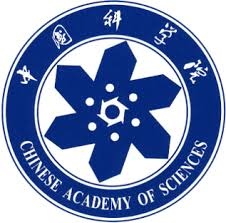As may be readily apparent from reading this blog, I am not a fan of commercial nuclear power based on fission. There are too many serious problems including radioactive waste disposal, ageing reactors, failure to follow regulations, nuclear weapons proliferation, etc. While I am very interested in the possible development of commercial nuclear power based on nuclear fusion, the failure to accomplish it after eighty years of research and many billions of dollars does temper my enthusiasm. Today, I thought I would take a look at some progress in fusion research, especially in China.
China has just announced breaking their previous record for achieving and maintaining extreme temperatures in their Experimental Advanced Superconducting Tokamak (EAST) fusion reactor. They were able to reach two hundred and sixteen million degrees Fahrenheit and hold it for 101 seconds. They were also able to reach two hundred and ninety million degrees Fahrenheit and hold it for 101 seconds. The previous record for the EAST was maintaining a plasma temperature of one hundred and eighty million degrees Fahrenheit for one hundred seconds.
The EAST reactor is hosted at the Hefei Institutes of Physical Science of the Chinese Academy of Sciences. Along with many other laboratories in other countries, China is trying to duplicate the nuclear fusion processes that take place in our Sun and the other stars in the universe. It is hoped that if controlled nuclear fusion can be developed, it will give the human race cheap, safe and nearly infinite power. China refers to their EAST reactor as an “artificial Sun.
Li Miao is the director of the physics department of the Southern University of Science and Technology in Shenzhen. According to him, the announced records in plasma temperature and confinement represent a milestone in keeping a high stable temperature in plasma that will be necessary to achieve commercial nuclear fusion. He said, “The breakthrough is significant progress, and the ultimate goal should be keeping the temperature at a stable level for a long time.” He hopes that their next milestone might be the stable maintenance of high temperature for a week or more.
Reaching a temperature of around one hundred and ninety million degrees Fahrenheit is one of the major challenges in the race for nuclear fusion. At the end of 2020, South Korea reached one hundred and ninety million degrees Fahrenheit for twenty seconds. It is believed that the temperature of the core our Sun is about twenty-seven million degrees Fahrenheit. This means that a fusion reactor has to reach at least seven times greater than the core of the Sun.
Lin Boqiang is the director of the China Center for Energy Economics Research at Xiamen University. He told an interviewer that if fusion technology can be applied to commercial power production, it will have huge economic benefits. However, he pointed out that fusion technology is still in the experimental stage. He believes that will be at least thirty years before fusion energy production can emerge from the laboratory into the marketplace. He said, “It's more like a future technology that's critical for China's green development push.”
The Chinese EAST experiment is part of the International Thermonuclear Experimental Reactor (ITER) project which is almost as big as the International Space Station. The ITER is being constructed by a consortium including China, the EU, India, Japan, South Korea, Russia and the US. The success of the ITER will be very important to the future peaceful of nuclear fusion. China contributes about nine percent of the ITER budget.
